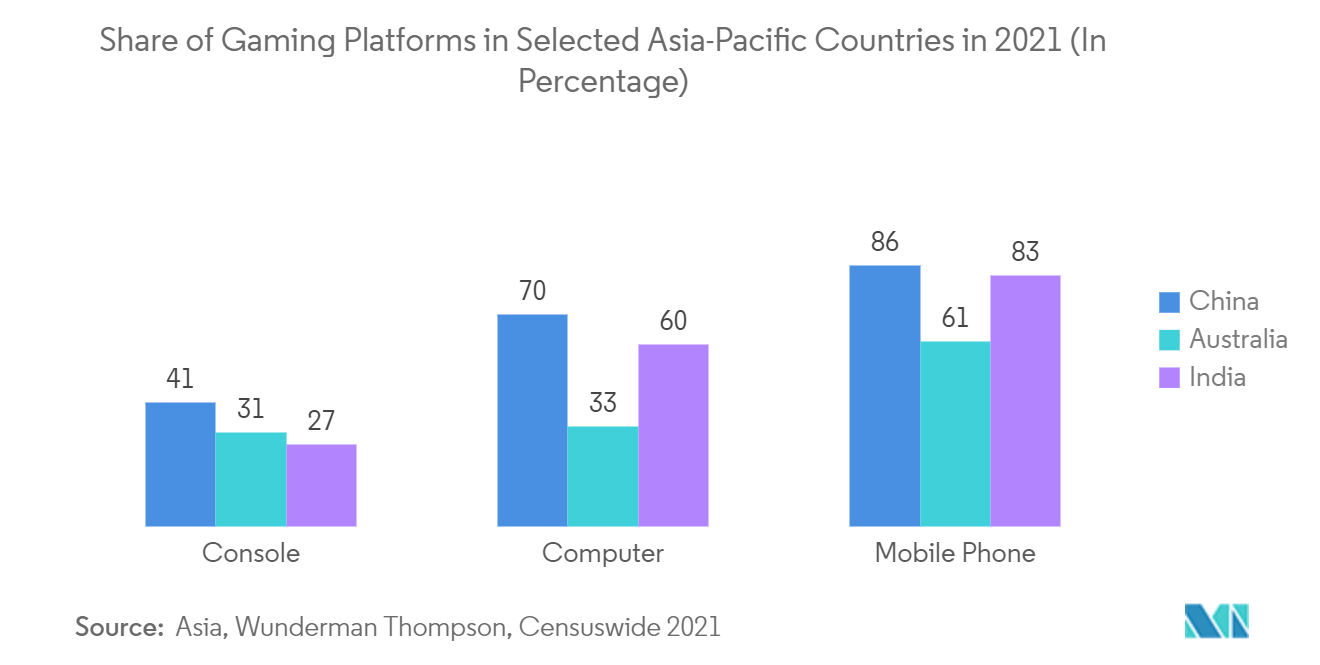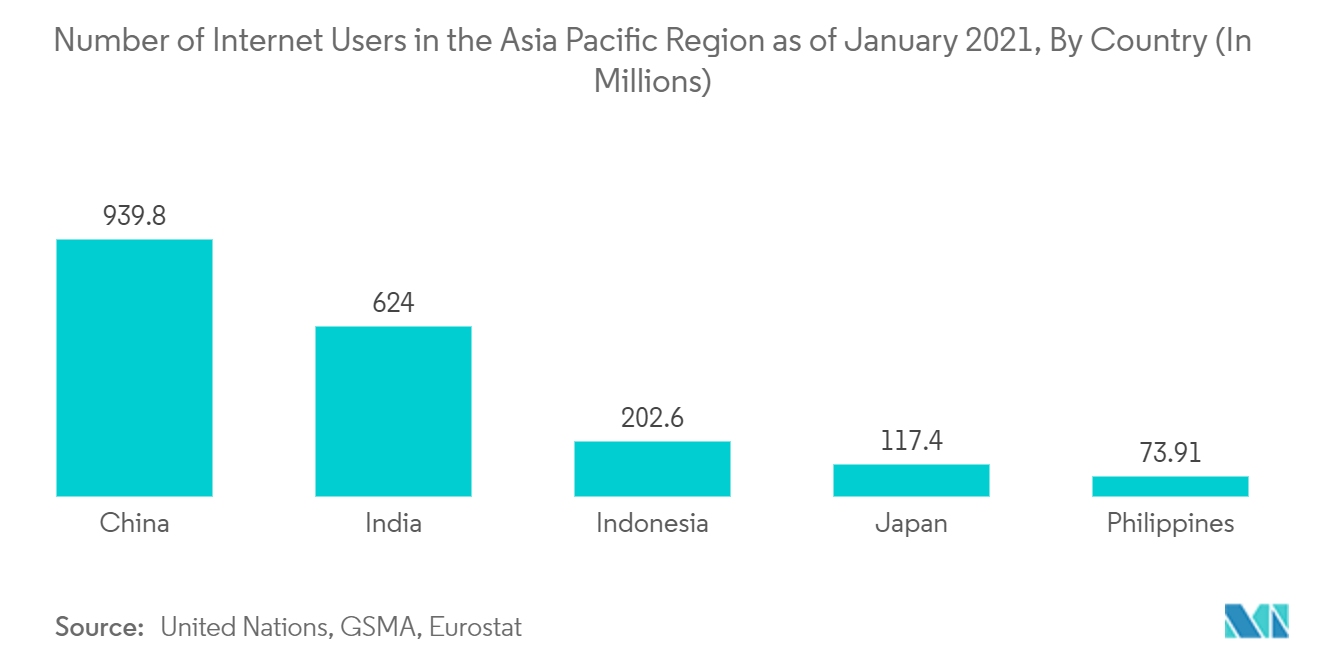Market Trends of Asia Pacific Computer Monitor Industry
This section covers the major market trends shaping the APAC Computer Monitor Market according to our research experts:
Gaming to Have a Significant Growth in the Region
- The growth of gaming culture in the Asia Pacific region leads to increased demand for gaming monitors as gamers move to multi-screen setups, whether connected to their desktop or notebook. Gaming PC and monitor shipments will increase in the Asia Pacific region in 2021 as the pandemic spreads to various regional markets and games continue to grow as a significant source of consumer entertainment.
- For instance, In February 2022, League of Legends maker Riot Games announced its intention to expand its business in the Asia Pacific region. The company has offices in the Philippines, India, Indonesia, Malaysia, and Thailand. These locations will be added to the publisher's existing studios in Japan and Singapore. This leverages the computer monitor market in the region.
- Moreover, According to a survey by Think with Google in December 2021, games in the Asia Pacific have seen tremendous growth over the last few months, drawing attention to the region's future. With more monitors, keyboards, and controllers than ever before, the region already accounts for 49% of global consumer game spending, with China, Japan, and South Korea spending on the global gaming market. (Source: Think with Google)
- Also, According to a recent survey by ET Telecom in June 2021, while 144 Hz refresh rate gaming monitors still contributed to sales, 165 Hz refresh rate gaming monitors grew significantly by 400.6% year-on-year as gamers stimulated their desire for high-end monitors, and the refresh rate has improved further.
- Moreover, Asian console games, with the exception of Japan, have never achieved the level of popularity seen in markets outside of Asia. However, COVID-19's slowdown led to a significant shift in consumer behavior, with console games growing most rapidly in South Korea and mainland China. To succeed in the region's gaming industry, publishers must reimagine the gaming experience to draw in players. Console gaming increased the need for monitors with higher resolutions.

Emergence of New Technologies and Proliferation of Internet Users is Driving The Market
- The key drivers of the given market can be considered as the increased internet penetration and the proliferation of low-cost monitors among the urban and rural populations.
- India has a significant potential for internet penetration owing to customers' rising usage of smartphones and computers. According to the Internet & Mobile Association of India (IAMAI), India is expected to have 900 million active Internet users by 2025, compared to around 622 million as of 2020, with a growth of about 45% in the next five years. The rapid growth of the Internet will drive more demand for computer monitors in the country.
- In the Asia Pacific, some major companies focus on expanding the computer monitor business by adding new features and technologies. For instance, in June 2021, Samsung announced the expansion of its Odyssey gaming monitor lineup. It will be available across the global markets from June 2021, providing gamers of all skill sets with superb picture quality and futuristic design.
- Similarly, In August 2022, ViewSonic made its metaverse debut in Bangladesh by virtually launching its latest gaming monitors and display products. The most recent ViewSonic professional gaming monitor features include the IPS displays, which provide optimal rich colors and contrast for a vivid viewing experience, as well as the most recent technology, which enables ultra-smooth, immersive, low latency gameplay with no screen tearing or stuttering.
- However, the global technology supply chain suffers from a shortage of components as the pandemic has begun to stimulate demand for computers, game consoles, and other gadgets. Further, the pandemic has dramatically increased the need for better "visualization." This trend was evident in various groups, such as teachers, doctors, researchers, technicians, students, families, and individuals.


